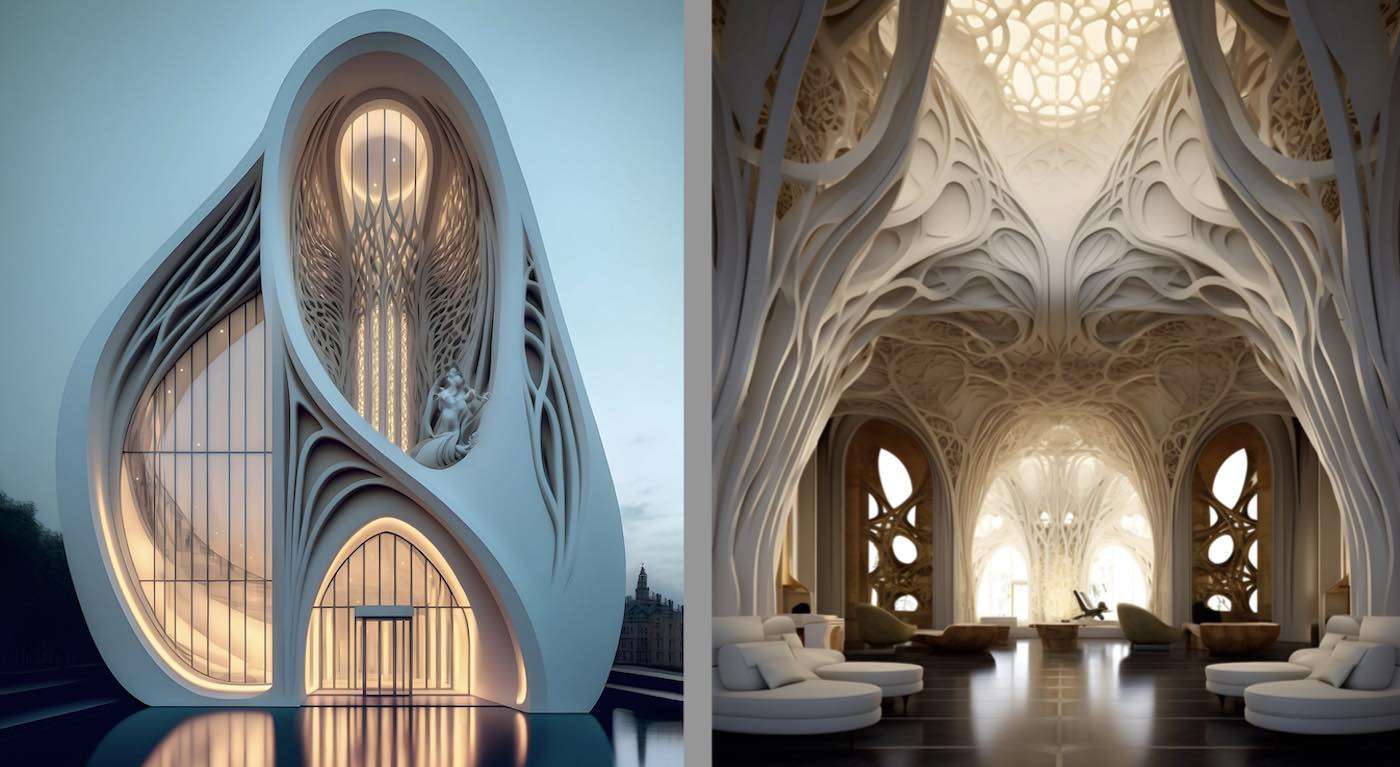Company Devises Ingenious Method of Repurposing Old Wind Turbines: 'The perfect time'
Large, commercial-scale operations for the recycling of decommissioned blades are expected to begin in the second half of 2023

What will be the next great architectural style, the one that shapes the skylines and suburbs of the future? If you've never heard of "neoclassical futurism" that's because it was just invented by an architect with a passion for letting machine learning take up the drafting pencil.
These are computer-generated images above made by a smart machine design program called Midjourney, and they display a mixture of old and new, and maybe a bit of Lady Galadriel's palace in Lothlorien on the right.
Arguing that AI in architecture is not just a disruptive technology or a useful tool, but a total paradigm shift, renowned architect Tim Fu left his position at the prestigious Zaha Hadid architecture firm to pursue artificial intelligence-driven design and engineering standards for world architecture.
His hope, as he explains in one interview, is to unify current fragmented architectural practices where engineers and designers are compartmentalized and separated, around AI's ability to automate dozens of tasks simultaneously while seamlessly blending existing architectural styles, or producing entirely new ones.

One of these he has dubbed "Neoclassical Futurism."
As Western Civilization gradually found its feet again after the fall of the Roman Empire, buildings in the Gothic style began rising from the ground all across Europe. Gothic cathedrals and townscapes dominated the land where stone was plentiful for hundreds of years until it was eventually replaced by the Renaissance, and then eventually Baroque styles.
"We love Renaissance cathedrals so much, yet we're building boxes everywhere," Fu told Dezeen in a long-form interview. "So why not bring back ornamentation, bring back the beauty and the aesthetics that we once held so highly in the classical era, and also allow machines to continue to fabricate and produce feasibly for us and free us up to do the more intricate and beautiful parts?"
Fu is perhaps unique in that he considers the ‘beautiful parts' as the carving of stone with hand tools, not the artistic design. He says that no machine can carve stone as well as a stonemason, work that in itself is deeply human and one of the first handicrafts ever developed in human society.
At a Venice architectural fair, Fu used Midjourney to create a series of brand new fusion column heads and teamed up with famous stone carver Till Apfel to bring them to life.
"I hope to usher in more ornamentation and move away from the minimalism that was ushered in by the Industrial Revolution," he explained. "The Industrial Revolution was about human ideation and machine fabrication, AI allowed [sic] us to put the machine at the ideation phase so that potentially we can use human fabrication instead and revert the role of the two."
Tim Fu isn't the only architect to hold a bullish opinion of AI's role in the profession. Earlier this year, WS covered the release of a tranche of images also created with Midjourney by Manas Bhatia, architect and head of the firm Ant Studio.
The AI created a vision of nature-inspired skyscrapers, symbiotic buildings that respirate like plants, with facades like bark and windows covered in trees and climbers.
SHARE This Bold Vision For The Future With Your Friends Interested In AI…
Be the first to comment